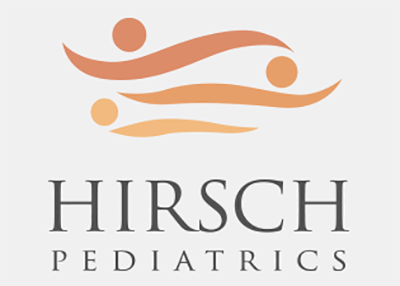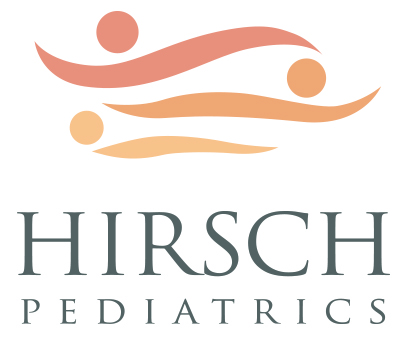Please Note: These guidelines are only for children who are fully vaccinated with no chronic medical illnesses.
These guidelines provide general guidance and should not be used as a substitute for the individual advice provided over the phone or at an appointment. If you have any significant or ongoing concerns, please call the office. Please contact Hirsch Pediatrics or go to the ER if your child is under 2 months old and has a fever (rectal temperature of 100.4 Fahrenheit or 38 Celsius).
These guidelines are written for patients of Hirsch Pediatrics and may not be copied or used without the written permission of Dr. Hirsch.
Why is my child vomiting?
- DON’T PANIC! Though vomiting may look scary the most common cause of vomiting in children is from a viral illness (“stomach bug”) and can easily be managed at home. Vomiting caused by a viral illness can also cause diarrhea and fever.
- Note: Please see Dr. Hirsch’s other handouts on diarrhea and fever for additional guidance on these topics. Other common causes of vomiting include reflux in infants; and toddlers that have a cold may vomit after coughing a lot.
How long will the vomiting last?
- Typically vomiting from a viral illness will last 3-5 days, though it can be intermittent for up to 7 days. Please schedule an appointment if your child is vomiting for more than 7 days.
How do I treat the vomiting?
- It is important to keep your children hydrated with the 6 step Hirsch Pediatrics Vomiting Protocol (see below). This protocol will guide you in fluid and diet management. Note: If your child vomits only once and otherwise looks well, you can hold off on the vomiting protocol.
- Dr. Hirsch does not recommend any over-the-counter nausea, vomiting, or diarrhea medications for children.
When can my child go back to school or daycare?
- Your child can return to school or daycare if your child has not vomited for 24 hours, does not have a fever for 24 hours, and overall looks well.
How do I know if my child is dehydrated?
- This is very important. The most important measure of hydration is your child’s activity level. In general, even if your child has vomited multiple times, your child is not dehydrated if your child is still playful and active in between the vomiting episodes. Even if your child is refusing most food and drink and continues to vomit, active and playful children are not dehydrated and can be managed at home even if they have less urine output.
- Your child may be dehydrated if he/she is very lethargic in between the vomiting episodes and cannot tolerate fluids on the vomiting protocol.
When do I need to worry?
- Please call us for an appointment if your child appears dehydrated; vomits bile (greenish tint to vomit) or blood more than once; or has worsening and persistent belly pain. In these situations your child may need intravenous fluids or additional tests done. If it is after hours please proceed to the Emergency Room (or contact Dr. Hirsch for additional advice if you are not sure). Also please make an appointment during regular hours if the vomiting persists more than 7 days.
- Also please call us if your child is under 2 months old has persistent vomiting.
Hirsch Pediatrics Vomiting Protocol
Step 1: Do not give any solids or milk products.
Step 2: Begin hydration with Pedialyte. You can also use diluted juice or juice mixed into the Pedialyte if your child will not take Pedialyte. Do not give water by itself (especially to infants) as this does not have the necessary electrolytes and calories. For infants that breast feed only and will not take a bottle, you can try to breastfeed for shorter periods of time every 2 hours.
Step 3: Give the following small amounts of Pedialyte every 20 minutes:
- infants should take 2 teaspoons (10 ml)
- toddlers should take 2 tablespoons (30 ml or 1 ounce)
- school age children should take 2-4 tablespoons (30-60 ml or 1-2 ounces)
Important note: Even though your child may be very thirsty and want more fluid, it is important to start with the recommended small amount to get the vomiting under control.
Step 4: After 2 hours of no vomiting, you can gradually increase the amount of fluids.
Step 5: After 8 hours of no vomiting, you can offer your child small amounts of bland foods (i.e. rice, apple sauce, toast, soup).
Step 6: After 24 hours of no vomiting, you can resume a regular diet.
** Note: If at any step along the way, your child vomits again then wait 20 minutes and return to step 1. It is common for children to look well and seem better but then start vomiting 1-2 days later when they eat too much.
Looking for something else? Click here to view all of Dr. Hirsch’s medical advice topics.

